Investigation on an Improved Household Refrigerator for Energy Saving of Residential Buildings
Abstract
:1. Introduction
2. Operating Principle
3. Measured Conditions of Midea BCD-111 Refrigerator
4. Mathematical Model
- -
- The temperature fluctuation of air is neglected.
- -
- The walls of refrigerator have the same heat conductive coefficient.
- -
- Rectangular straight fin efficiency is adopted for aluminum plates [20].
- -
- The heat transfer is steady-state and 1D.
- -
- The temperatures at evaporating and condensing sections of heat pipes are considered uniform (THP = Tcon = Teva) since the internal two-phase thermal resistance is far less than the external convective thermal resistance.
- -
- The external surface temperature of side freezer walls is given as a boundary condition due to the influence of condenser of the BCD-111 refrigerator.
- Boundary condition 1: the surrounding air temperatures are given for the original freezer walls (or the evaporating sections of heat pipes in fresh food compartment);
- Boundary condition 2: the average outside wall temperatures are given for the improved freezer walls.
5. Results and Discussion
5.1. Performances at Different Ambient Temperatures
5.2. Performances at Different Temperature Gears
5.3. Performances at Different Heat Pipe Design
6. Conclusions
Author Contributions
Funding
Conflicts of Interest
Nomenclature
| A | heat transfer area [m2] |
| amb | ambient air |
| C | cold loss [W] |
| HP | heat pipes |
| Q | heat flux [W] |
| R | thermal resistance [K·W−1] |
| T | temperature [°C] |
| Xin | ratio of wall thickness inside of heat pipes to whole wall thickness [%] |
| Greek letters | |
| α | convective heat transfer coefficient [W·m−2·K−1] |
| δ | wall thickness [m] |
| ε | iteration error |
| λ | heat conductivity coefficient [W·m−1·K−1] |
| η | ratio [%] |
| Superscripts | |
| ′ | original refrigerator |
| ″ | iterative value |
| Subscripts | |
| 1 | boundary condition 1 |
| 2 | boundary condition 2 |
| con | condensing section |
| HP | heat pipe |
| d | heat conduction |
| eva | evaporating section |
| f | freezer |
| fre | fresh food compartment |
| in | inside |
| our | outside |
| re | recovery |
| s | side freezer wall |
| t | topside freezer wall |
| v | convective heat transfer |
| w | freezer wall |
References
- Zhao, H.X.; Magoules, F. A review on the prediction of building energy consumption. Renew. Sustain. Energy Rev. 2012, 16, 3586–3592. [Google Scholar] [CrossRef]
- Jones, R.V.; Fuertes, A.; Lomas, K.J. The socio-economic, dwelling and appliance related factors affecting electricity consumption in domestic buildings. Renew. Sustain. Energy Rev. 2015, 43, 901–917. [Google Scholar] [CrossRef] [Green Version]
- Pirvaram, A.; Sadrameli, S.M.; Abdolmaleki, L. Energy management of a household refrigerator using eutectic environmental friendly PCMs in a cascaded condition. Energy 2019, 181, 321–330. [Google Scholar] [CrossRef]
- Jomde, A.; Bhojwani, V.; Deshnnukh, S. Challenges in implementation of a moving coil linear compressor in a household refrigerator. Int. J. Ambient Energy 2019, 1–4. [Google Scholar] [CrossRef]
- Tosun, M.; Dogan, B.; Ozturk, M.M.; Erbay, L.B. Integration of a mini-channel condenser into a household refrigerator with regard to accurate capillary tube length and refrigerant amount. Int. J. Refrig. 2019, 98, 428–435. [Google Scholar] [CrossRef]
- Alhamid, M.; Nasruddin, N.; Susanto, E.; Vickary, T.; Budiyanto, M.A.J.E. Refrigeration Cycle Exergy-Based Analysis of Hydrocarbon (R600a) Refrigerant for Optimization of Household Refrigerator. Evergreen 2019, 6, 71–77. [Google Scholar] [CrossRef]
- Maiorino, A.; Del Duca, M.G.; Mota-Babiloni, A.; Greco, A.; Aprea, C. The thermal performances of a refrigerator incorporating a phase change material. Int. J. Refrig. 2019, 100, 255–264. [Google Scholar] [CrossRef]
- Kojima, K.; Shinagawa, E.; Uematsu, I.; Hayamizu, N.; Ooshiro, K. Vacuum Insulation Panel, Core Material, and Refrigerator. U.S. Patent Application 15/556,920, 22 August 2019. [Google Scholar]
- Kim, H.C.; Keoleian, G.A.; Horie, Y.A. Optimal household refrigerator replacement policy for life cycle energy, greenhouse gas emissions, and cost. Energy Policy 2006, 34, 2310–2323. [Google Scholar] [CrossRef]
- Cheng, W.L.; Ding, M.; Yuan, X.D.; Han, B.C. Analysis of energy saving performance for household refrigerator with thermal storage of condenser and evaporator. Energy Convers. Manag. 2017, 132, 180–188. [Google Scholar] [CrossRef]
- Afonso, C.F. Household refrigerators: Forced air ventilation in the compressor and its positive environmental impact. Int. J. Refrig. 2013, 36, 904–912. [Google Scholar] [CrossRef]
- Liu, Y.C.; Chen, K.; Xin, T.L.; Cao, L.H.; Chen, S.M.; Chen, L.X.; Ma, W.W. Experimental study on household refrigerator with diffuser pipe. Appl. Therm. Eng. 2011, 31, 1468–1473. [Google Scholar] [CrossRef]
- Cao, J.Y.; Li, J.; Zhao, P.H.; Jiao, D.S.; Li, P.C.; Hu, M.K.; Pei, G. Performance evaluation of controllable separate heat pipes. Appl. Therm. Eng. 2016, 100, 518–527. [Google Scholar] [CrossRef] [Green Version]
- Cao, J.Y.; Pei, G.; Chen, C.X.; Jiao, D.S.; Jing, L. Preliminary study on variable conductance loop thermosyphons. Energy Convers. Manag. 2017, 147, 66–74. [Google Scholar] [CrossRef]
- Soylemez, E.; Alpman, E.; Onat, A. Experimental analysis of hybrid household refrigerators including thermoelectric and vapour compression cooling systems. Int. J. Refrig. 2018, 95, 93–107. [Google Scholar] [CrossRef]
- Fatouh, M.; Abou-Ziyan, H.J.A.T.E. Energy and exergy analysis of a household refrigerator using a ternary hydrocarbon mixture in tropical environment–Effects of refrigerant charge and capillary length. Appl. Therm. Eng. 2018, 145, 14–26. [Google Scholar] [CrossRef]
- Moayednia, N.; Ehsani, M.R.; Emamdjomeh, Z.; Asadi, M.M.; Mizani, M.; Mazaheri, A.F.J.A.J.o.B.; Sciences, A. The effect of sodium alginate concentrations on viability of immobilized Lactobacillus acidophilus in fruit alginate coating during refrigerator storage. Aust. J. Basic Appl. Sci. 2009, 3, 3213–3226. [Google Scholar]
- Cao, J.Y.; Chen, C.X.; Gao, G.T.; Yang, H.L.; Su, Y.H.; Bottarelli, M.; Cannistraro, M.; Pei, G. Preliminary evaluation of the energy-saving behavior of a novel household refrigerator. J. Renew. Sustain. Energy 2019, 11, 015102. [Google Scholar] [CrossRef]
- Cao, J.Y.; Chen, C.X.; Hu, M.K.; Wang, Q.L.; Cannistraro, M.; Leung, M.K.H.; Pei, G. Numerical analysis of a novel household refrigerator with controllable loop thermosyphons. Int. J. Refrig. 2019, 104, 134–143. [Google Scholar] [CrossRef]
- Bergman, T.L.; Incropera, F.P.; DeWitt, D.P.; Lavine, A.S. Fundamentals of Heat and Mass Transfer; John Wiley & Sons: Hoboken, NJ, USA, 2011. [Google Scholar]
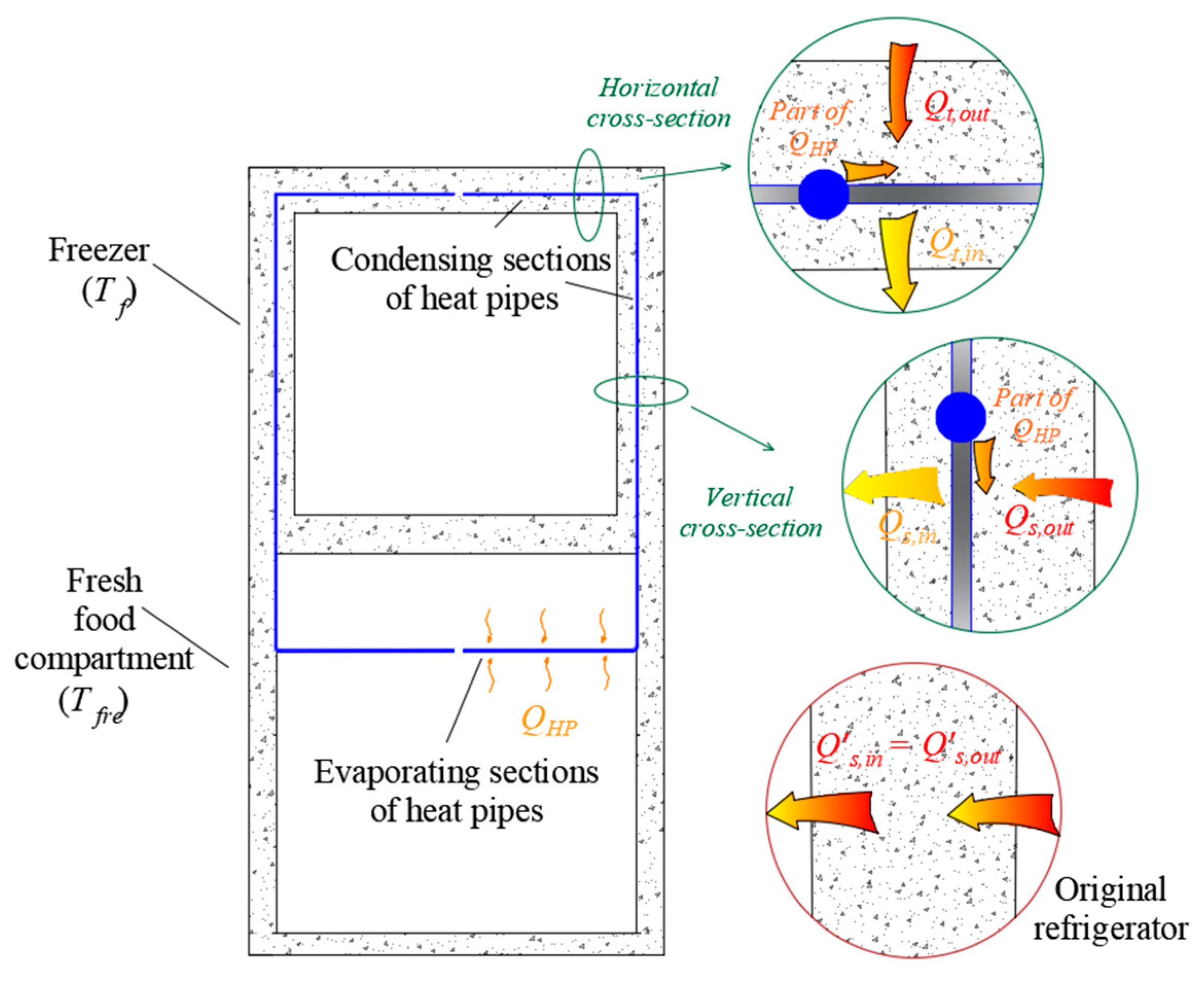



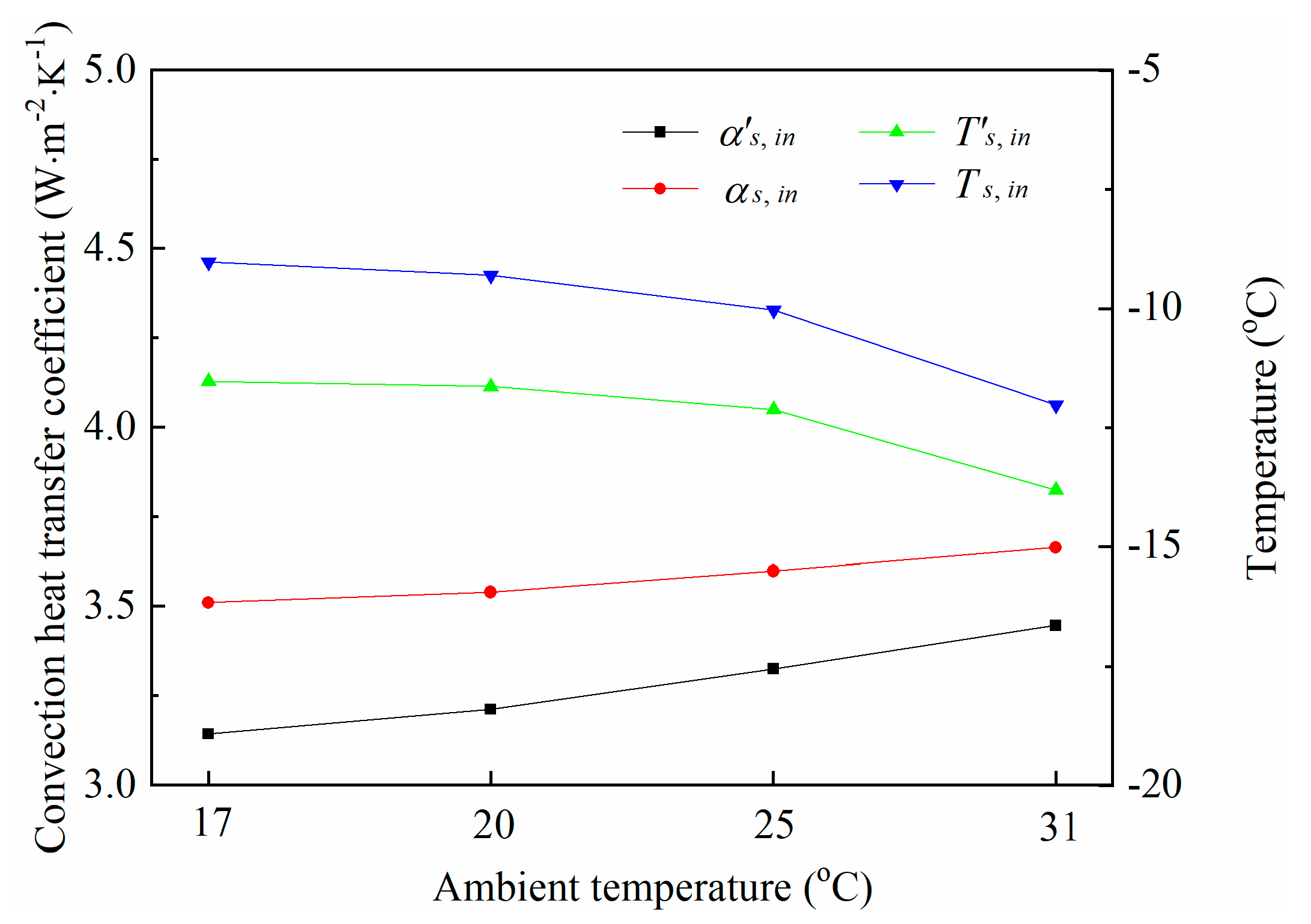


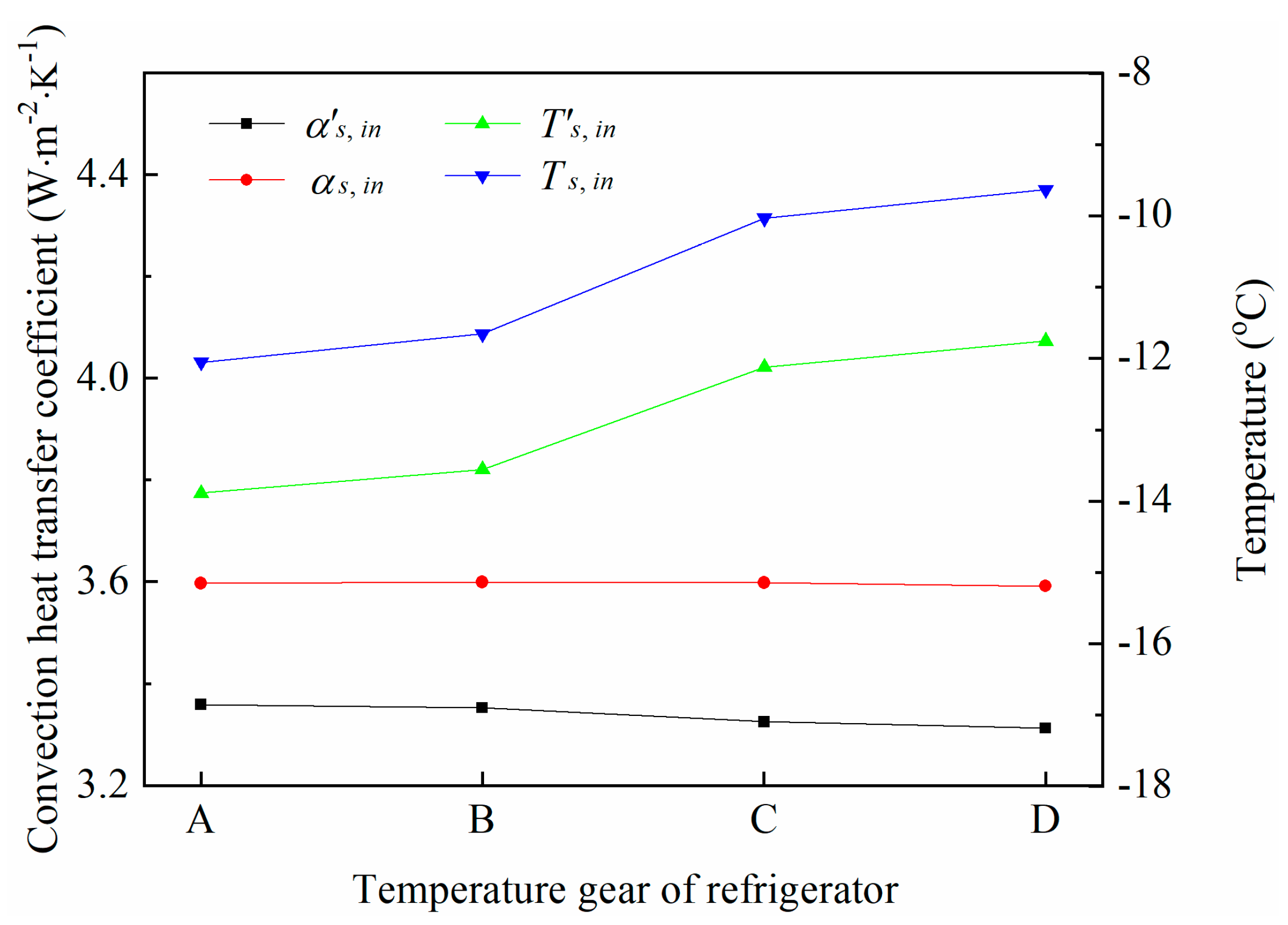
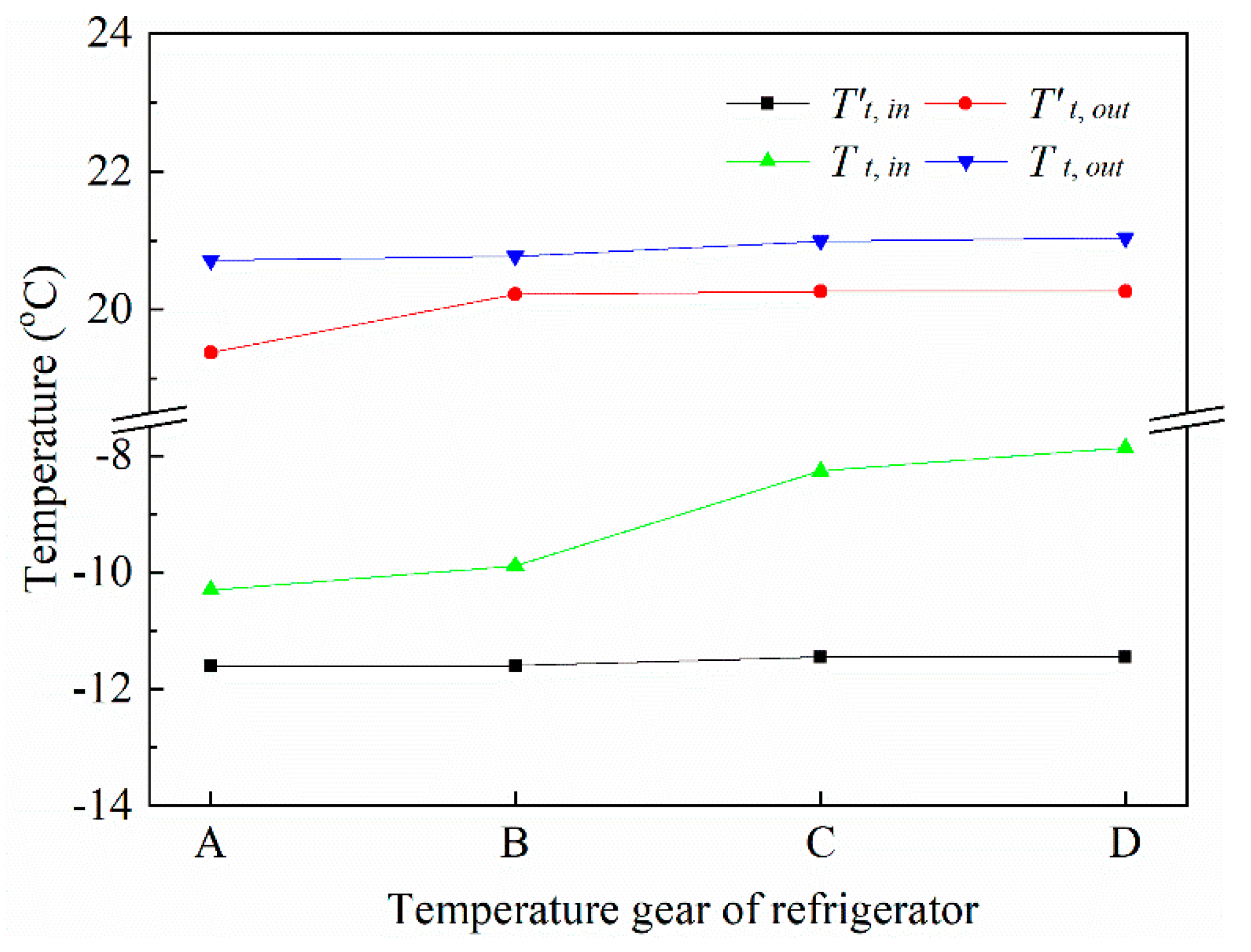
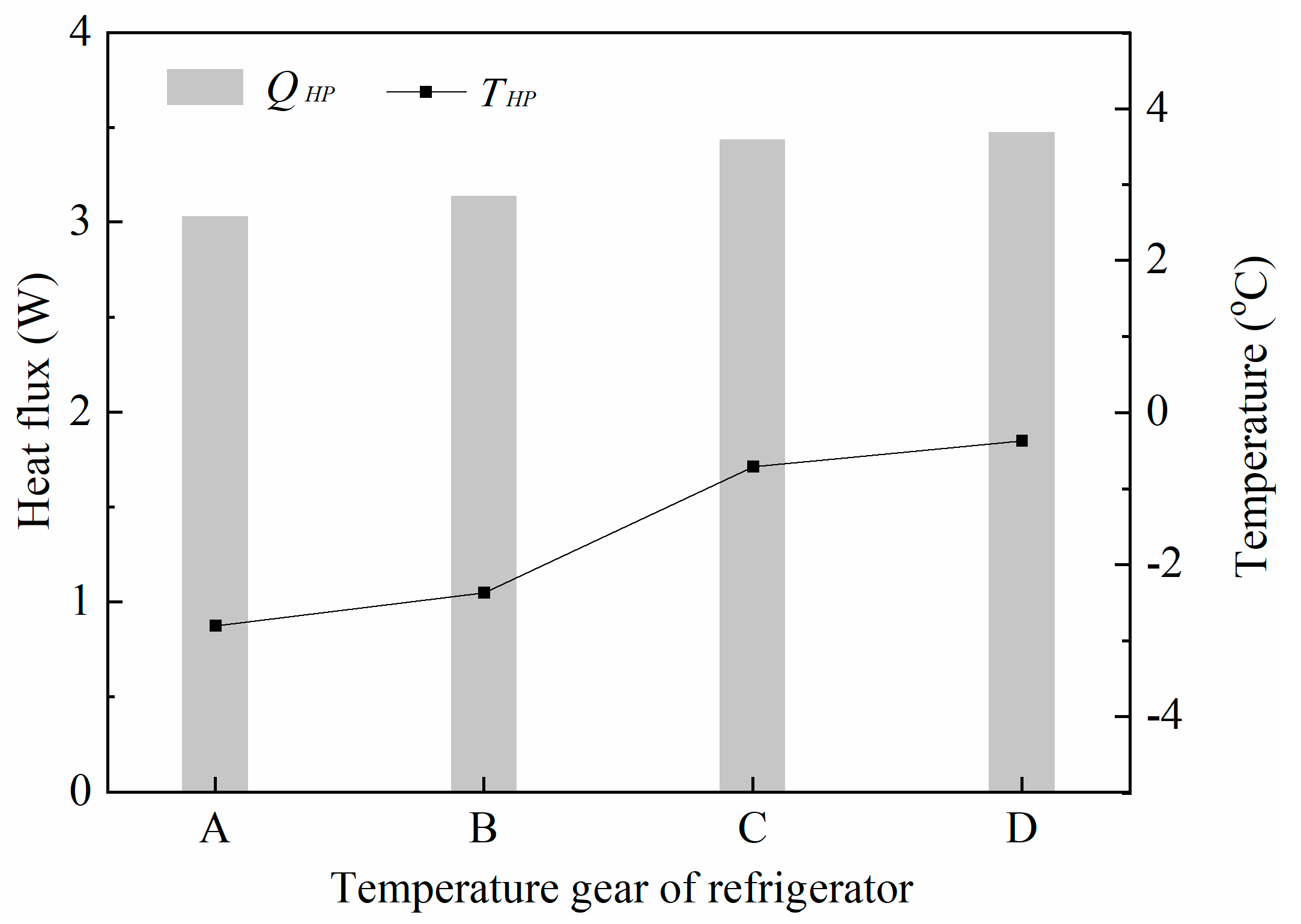
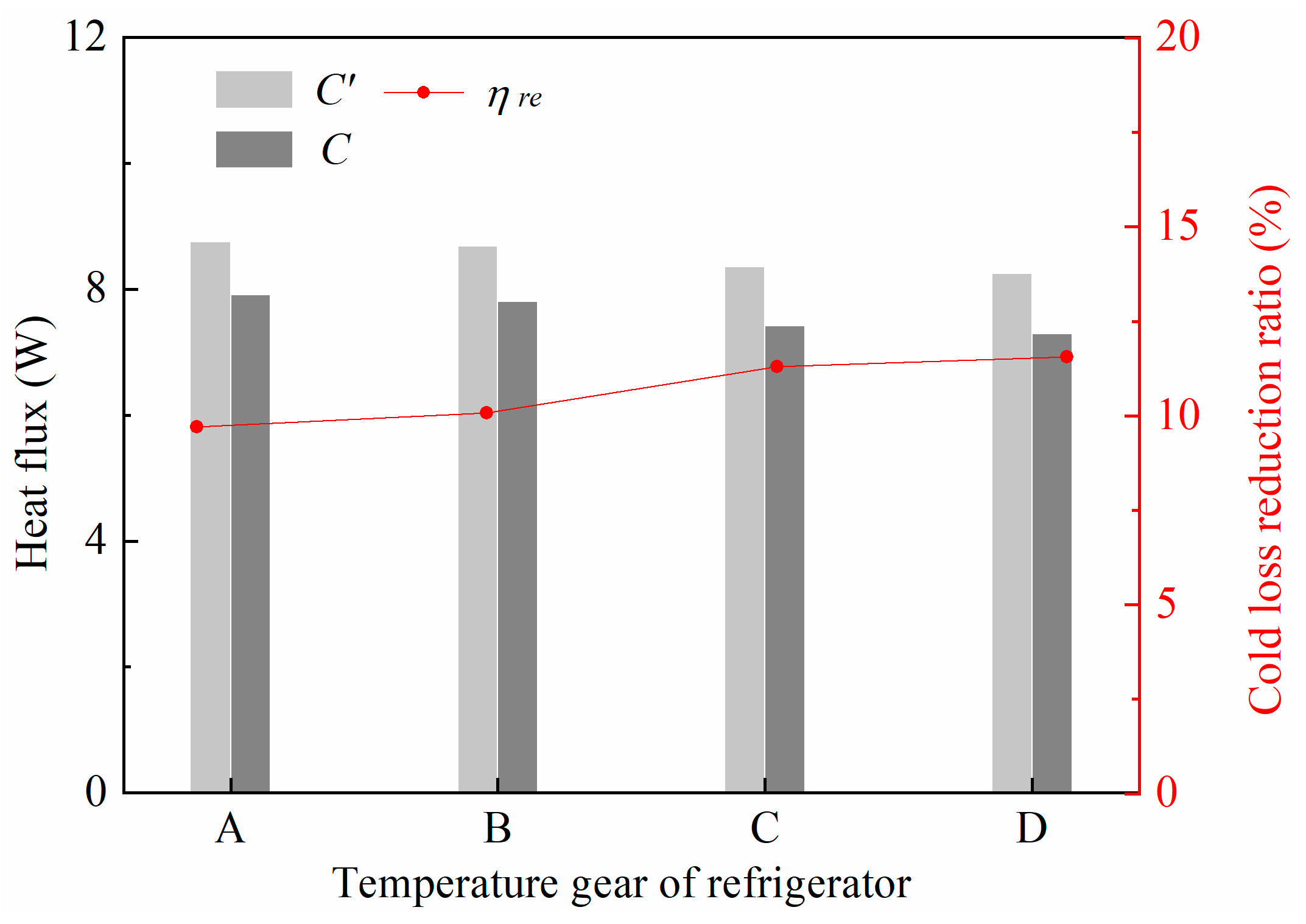
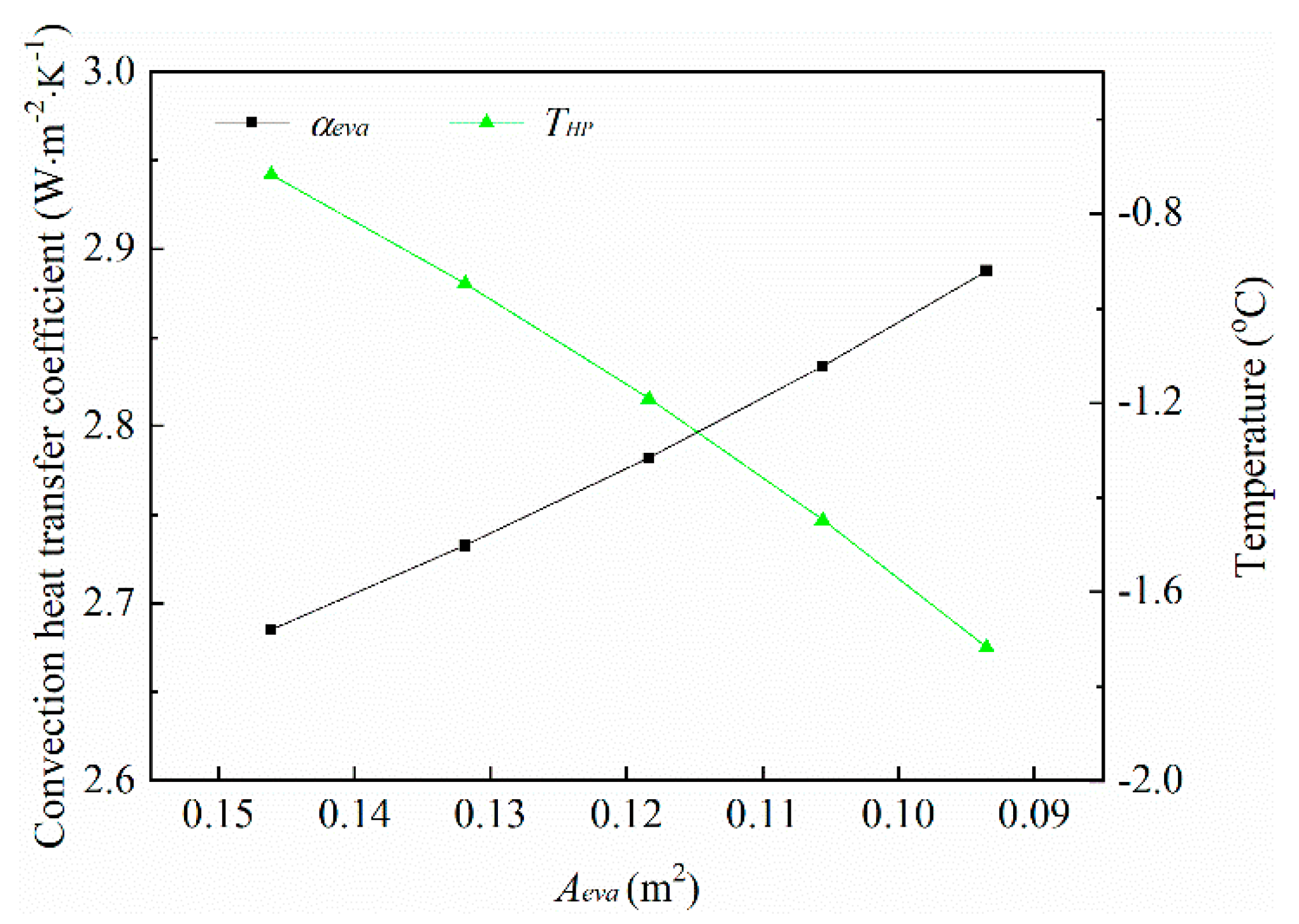
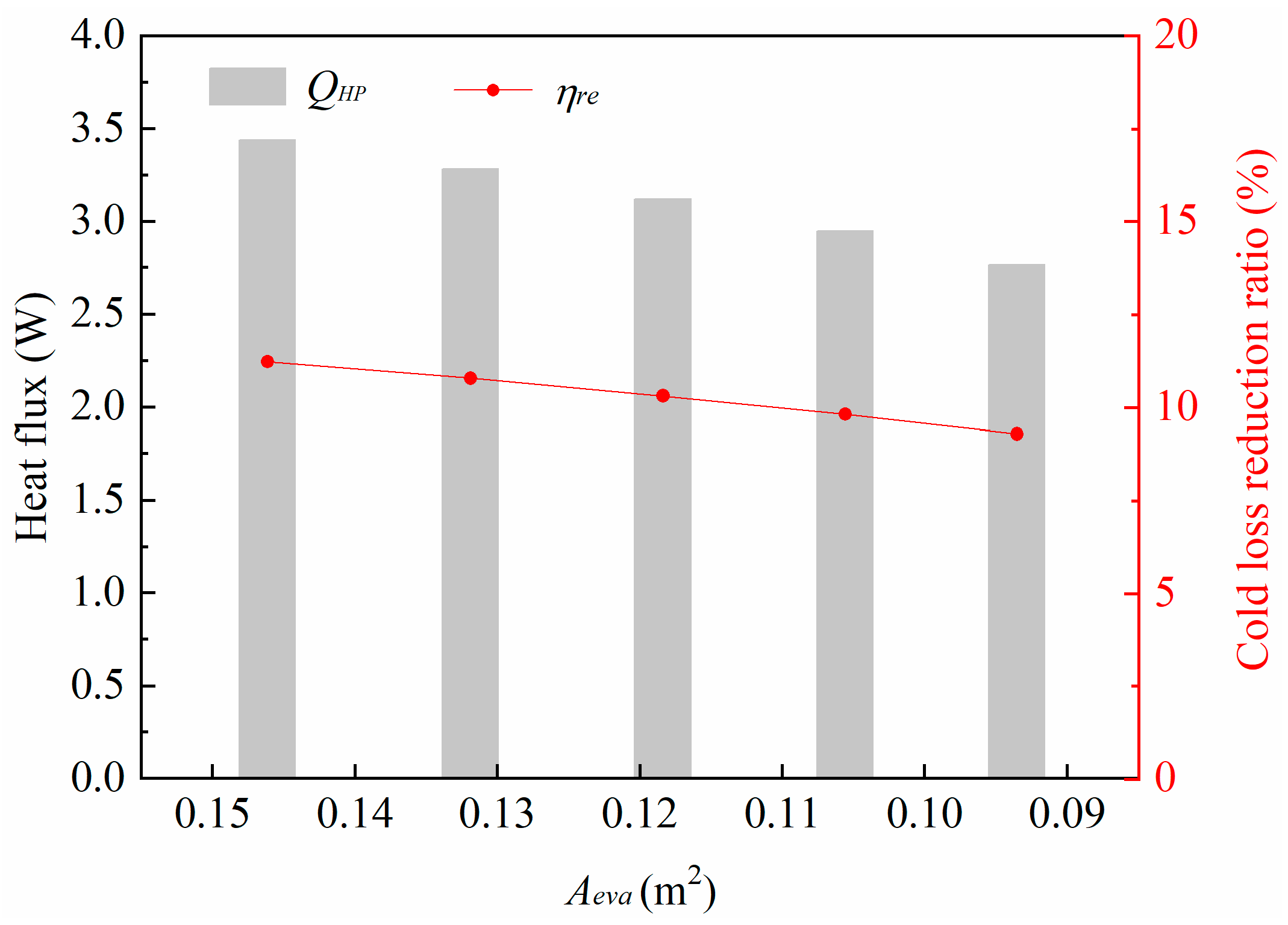
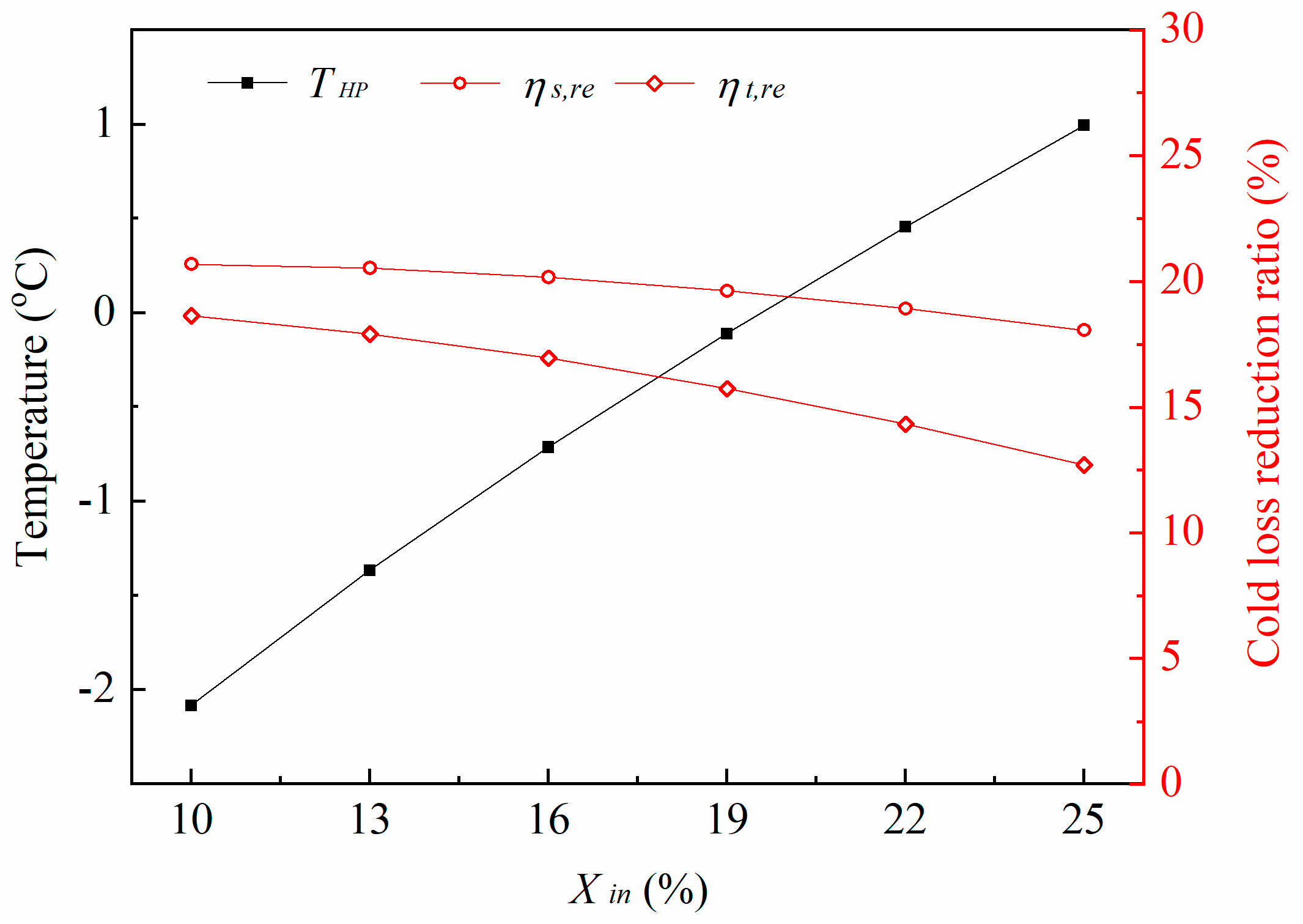

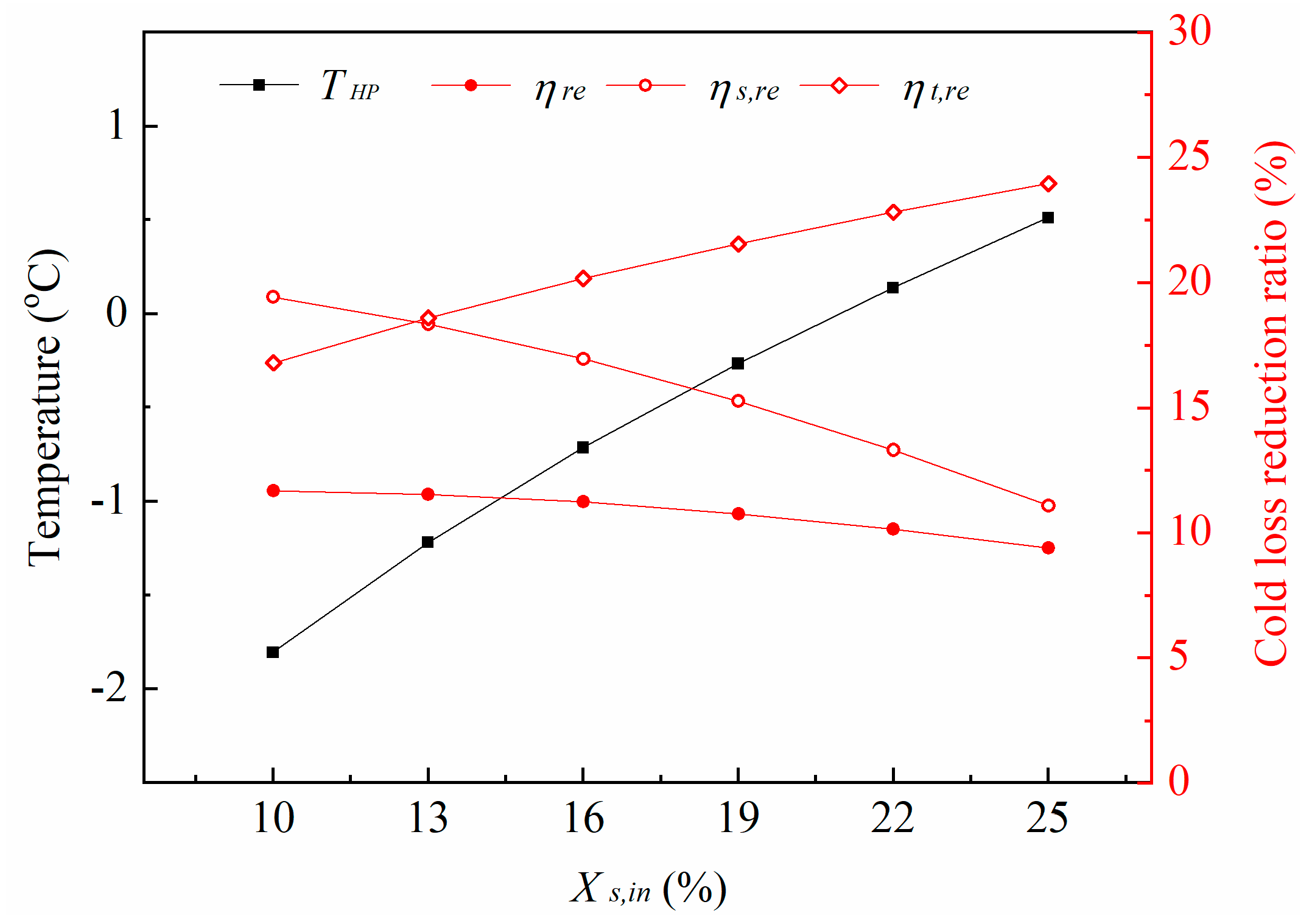

| Operating States of the Tested Refrigerator | Tf [°C] | Tfre [°C] | Ts,out [°C] | |
|---|---|---|---|---|
| Ambient Temperature [°C] | Temperature Gear | |||
| 25.0 | C | −17.7 | 4.7 | 27.0 |
| 17.0 | C | −16.0 | 5.2 | 18.1 |
| 20.0 | C | −16.5 | 5.0 | 21.3 |
| 31.0 | C | −20.2 | 2.9 | 32.6 |
| 25.0 | A | −19.6 | 2.1 | 27.0 |
| 25.0 | B | −19.3 | 2.6 | 27.0 |
| 25.0 | D | −17.2 | 5.0 | 26.7 |
© 2020 by the authors. Licensee MDPI, Basel, Switzerland. This article is an open access article distributed under the terms and conditions of the Creative Commons Attribution (CC BY) license (http://creativecommons.org/licenses/by/4.0/).
Share and Cite
Cao, J.; Wang, Q.; Hu, M.; Ren, X.; Liu, W.; Su, Y.; Pei, G. Investigation on an Improved Household Refrigerator for Energy Saving of Residential Buildings. Appl. Sci. 2020, 10, 4246. https://doi.org/10.3390/app10124246
Cao J, Wang Q, Hu M, Ren X, Liu W, Su Y, Pei G. Investigation on an Improved Household Refrigerator for Energy Saving of Residential Buildings. Applied Sciences. 2020; 10(12):4246. https://doi.org/10.3390/app10124246
Chicago/Turabian StyleCao, Jingyu, Qiliang Wang, Mingke Hu, Xiao Ren, Weixin Liu, Yuehong Su, and Gang Pei. 2020. "Investigation on an Improved Household Refrigerator for Energy Saving of Residential Buildings" Applied Sciences 10, no. 12: 4246. https://doi.org/10.3390/app10124246





